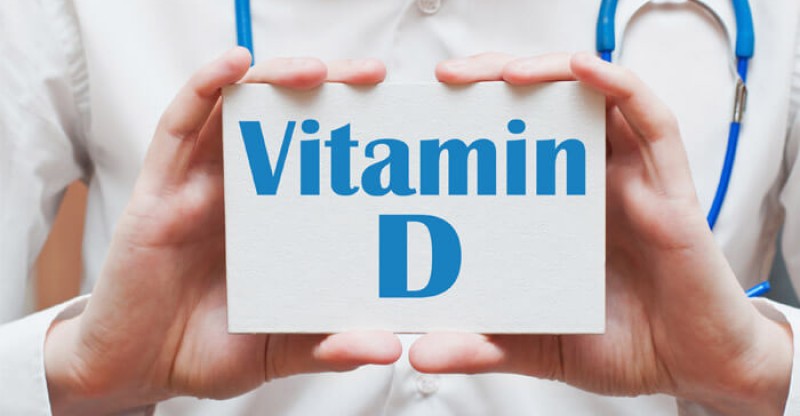10 Signs and Symptoms of a Vitamin D Deficiency
What is Vitamin D Deficiency?
Whether you believe it or not, vitamin deficiencies can cause many problems in your body.
Some of the symptoms from vitamin deficiencies are easy to ignore, too, such as fatigue and minor body aches.
Experiencing more than one symptom should suggest the idea that some greater problem exists in the body outside of typical stress.
However, studies indicate that your body uses certain vitamins like hormones.(1)
One such vitamin is vitamin D, and many receptors in the body rely on it.
Vitamin D deficiency symptoms can be rather simple, but dealing with them all at once can be challenging.
Here are ten signs and symptoms caused by vitamin D deficiency.
Why Vitamin D Deficiency Happens?
There are a few conditions that can make you more susceptible to low Vitamin D.
The baseline vitamin D you should receive each day is between 400 and 800 IU, but many doctors believe you should focus on gaining even more.
According to evidence from a study performed in 2011, over 40 percent of adults in the United States are deficient in a vitamin D.(2)
The most common symptom of vitamin D deficiency is fatigue.
You might be more prone to a vitamin D deficiency if you possess one of these common risk factors:
- Dark skin
- Elderly in age
- Living indoors too much or farther from the equator where the sun is not abundant
- Not drinking milk
- Not eating fish
- Obesity
- Overusing sunscreen
In most cases, you are more likely to reduce your vitamin D deficiency if you spend more time outside since the skin produces enough vitamin D when exposed to sunlight.
There are other ways to go about increasing your vitamin D intake, though.
Foods that Contain Vitamin D
If spending more time outdoors is not an option, then you should look into food as a natural supplement for more vitamin D.
For one, you can try the easy route: dairy fortified with vitamin D.
Whole milk and margarine or butter often come with this label.
Another option is to go with fatty fish, such as tuna and mackerel.
Liver, egg yolks, and cheese also have vitamin D.
In worst-case situations, you can take a daily vitamin D supplement or go for shots, but gaining vitamin D from natural resources is far more effective.
A side note: leafy green vegetables like spinach, kale and collard greens are abundant in calcium, but your body won’t be able to absorb it effectively if you are low in vitamin D.
10 Signs and Symptoms of Vitamin D Deficiency
You might have a few of these symptoms which can indicate that you might have a deficiency.
However, you might not even notice them, even if they occur at the same time.
Regardless of this situation, you should be on the lookout for the following ten signs and symptoms of vitamin D deficiency.
Bone Mineral Loss
While you might think that older women are the only people who experience bone loss, you might be surprised to realize that you could too if you have a vitamin D deficiency.
At the same time, these women might mistake their vitamin D deficiency for a calcium deficiency.
One way to determine which one you have, or if both are at play, is with bone density and blood tests.
Low bone mineral levels are certainly an indication of calcium loss, but mineral losses are also linked to vitamin D.
One study found that there was a strong connection between vitamin D deficiency and lower bone mineral density in menopausal and postmenopausal women.(3)
Therefore, maintaining sufficient blood levels of vitamin D can lower the risk of low bone-mineral counts, which can also prevent things such as fractures from occurring as easily.
Back and Bone Pain
Vitamin D is linked to managing bone health in many ways, mostly because of the link between vitamin D and calcium.
In fact, vitamin D is the factor that helps manage the way your body absorbs and processes calcium.
Hence, if you are vitamin D deficient, you will likely be calcium deficient.
You will need to improve your intake of both calcium and vitamin D.
Once more, you can turn to certain foods for this increased intake.
A deficiency in both vitamin D and calcium can lead to back and bone pain quite easily.
Chronic lower back pain, specifically, can come from a lack of vitamin D.(4)
As mentioned previously, menopausal and postmenopausal women are just as likely to experience this problem due to lower bone mass.(5)
One study of over 9,000 such women found that nearly a quarter of them were deficient in vitamin D; 15 percent of them had vertebral fractures.
The pain that comes from this deficiency can be severe enough that it can limit your daily activities.
If you have a vitamin D deficiency, you also are two times more likely to experience pain in your legs, ribs, and joints.(6)
Depression
One of the more common vitamin D deficiency symptoms is depression.
If you experience a lot of stress, you might be inclined to ignore bouts of depression.
This also holds true if you have a mood disorder or mental illness such as bipolar disorder.
You might just assume the depression is part of the stress or from the diagnosis you already have.
However, depression can come on stronger or be made worse from vitamin D deficiency.
In several studies, depression appears to be linked to vitamin D deficiencies – especially in older adults.(7,8)
Per one research example, 65 percent of observations indicated that depression is one of the direct effects of low vitamin D.
Therefore if you have a sudden onset or worsening of depression, it might be wise for you to consider a vitamin D blood test.
Vitamin D Deficiency Fatigue
Fatigue is probably the most common sign that you might be lacking this vitamin.
Vitamin D deficiency can easily be overlooked, especially if you lead a stressful lifestyle.
In some studies, there was excessive daytime sleepiness that was apparently associated with this deficiency.(9)
Any vitamin D blood level below 20 ng/ml is considered deficient, and being lower than this number causes a lower quality of life.
Per one example, a patient presented with chronic fatigue during the day, and her vitamin D blood levels presented at 5.9 ng/ml.(10)
A daily supplement raised her blood level to 39 ng/ml within a short amount of time, and her symptom was resolved.
Working in certain professions sometimes causes low vitamin D.
For example, nurses are not likely to see much sunlight, and their stressful work environments can also contribute to losing more vitamin D.
In one study, 89 percent of nurses participating in the research were found to be deficient.(11)
Teachers, doctors, and some factory workers are also likely to experience problems with their vitamin D blood levels.
Problems Fighting Illnesses and Infections
You may not realize what a large role vitamin D plays in keeping your immune system strong and healthy.
Lacking vitamin D can lead to problems with your immune system, which means you are more likely to become sick.
This statement is especially true during cold and flu seasons.
Even if you obtain a flu shot, you could still contract flu and cold viruses if you are deficient in vitamin D.
In fact, some studies indicate a link between this deficiency and respiratory tract infections during any time of the year.(12,13)
Furthermore, you might experience a more difficult time fighting off infections, and certainly so after surgeries, if your vitamin D count is low.(14)
Both of these situations can easily be remedied.
Increasing your intake of vitamin D-rich foods might not be enough, especially during cold and flu season.
Therefore, can be beneficial.
Fighting Off Side Effects of Other Lung Problems
Infections are not the only causes of breathing troubles.
If you have COPD or lung cancer, you might also be able to benefit from taking extra vitamin D.(15)
If this is your situation, it certainly makes sense to increase your vitamin D levels.
Thinning or Losing Hair
Another symptom you might attribute to stress is hair loss.
Meanwhile, you might think certain medications you take are causing this symptom.
However, severely thinning hair is often related to nutrient deficiency.
In many cases, this lost nutrient is vitamin D. Most women who experience hair loss can most likely thank a lack of vitamin D for this problem.(16)
If you have alopecia, an autoimmune disease that causes severe hair loss on all parts of the body, then you need to focus on increasing your vitamin D intake.
Furthermore, a lack of vitamin D can also cause rickets – the leading cause of soft bone tissue in children.(17)
An association exists between rickets and alopecia, and that.
In order to treat both of these concerns, you do not have to focus solely on ingesting vitamin D as it also comes in a topical, synthetic form.(18)
Since the skin naturally absorbs vitamin D from the sun, it can also easily obtain it from this topical application.
Slower Healing Wounds
As with the link between infections and vitamin D deficiency, any wounds you might experience can also take longer to heal.
The source of these wounds does not matter.
Test tube studies indicate that the presence of sufficient vitamin D aids the compounds that help generate new cells.(19)
Therefore, staying out in sunlight a little bit each day can increase the rate at which your skin heals.
Deficiency-related delays in skin cell regeneration can open you up to a higher risk of infection as well.
Since vitamin D also helps to in the body, you could prevent the onset of wound-healing problems in general by maintaining the right level of vitamin D.
One study took a closer look at foot infections in diabetic patients.
For these patients, the lack of cell regeneration and the higher levels of inflammation can lead to poor healing.
Therefore, some patients might experience a total loss of certain parts of their feet.
To prevent losing toes and other parts of the foot, those in this situation should increase their vitamin D with a supplement.(20)
Much the same can be said for leg ulcers.
In one study, patients with these ulcers saw a 28 percent decrease in the size of their ulcers over time with vitamin D supplementation.(21)
Fighting Arthritis
As mentioned previously, increasing your vitamin D intake can mean preventing inflammation from becoming worse.
If you have any form of arthritis, you certainly can benefit from this increase.
However, you might also be surprised to find out that a vitamin D deficiency can lead to osteoporosis.
The inability to absorb calcium due to a lack of vitamin D, which the body treats like a hormone, makes your bones brittle and weak over time.
Finding ways to raise your vitamin D levels prevents osteoporosis and other forms of arthritis from becoming worse.
Should you have rheumatoid arthritis, then the rise in inflammation from a lack of vitamin D can cause musculoskeletal pain.
Muscle Pain
Experiencing bone and back pain is bad, but it may be difficult to distinguish them from another symptom – muscular pain.(22)
Children who struggle with this deficiency are more likely to experience muscle pain in their legs, which should not be mistaken for growing pains.(23)
Once more, this situation links back to how vitamin D acts as a hormone in the body.
It focuses on stimulating nociceptors in muscles to make them relax and flex more easily.(24)
These receptors deal with pain management as well, hence why lacking vitamin D makes muscles hurt.
Muscular hypersensitivity can occur with this deficiency, which is why children’s complaints about muscle pain should not be looked at as strictly being growing pains.
In truth, a study looking at 120 children with a vitamin D deficiency were able to reduce their pain by 57 percent when taking a supplement while experiencing growing pains.(25)
Conclusion
Even though vitamin D deficiencies can easily be fixed by tweaking your diet or taking a supplement, you might not even know you have this deficiency in the first place.
Having one of the symptoms might not be enough to warrant a blood test to check.
Experiencing multiple symptoms at one time might not even tip you off to needing more vitamin D.
However, you should look closely at the signs and consider the weight they hold in relation to one another.
A simple blood test can provide the ultimate answer to all of these problems in the end.
FDA Compliance
The information on this website has not been evaluated by the Food & Drug Administration or any other medical body. We do not aim to diagnose, treat, cure or prevent any illness or disease. Information is shared for educational purposes only. You must consult your doctor before acting on any content on this website, especially if you are pregnant, nursing, taking medication, or have a medical condition.
HOW WOULD YOU RATE THIS ARTICLE?






